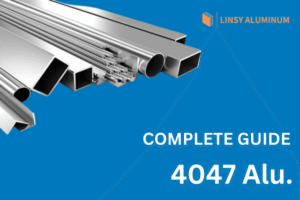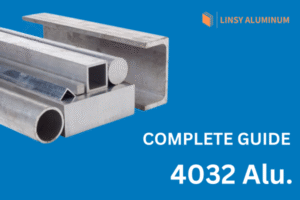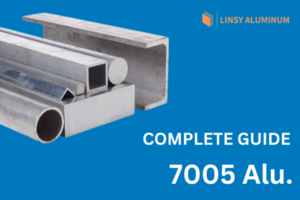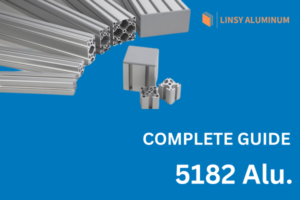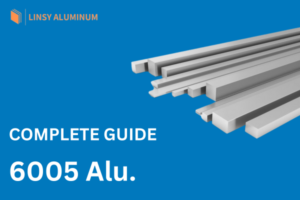Key Highlights
-
2017 aluminum alloy, also known as duralumin, is popular for its high strength-to-weight ratio.
-
It exhibits excellent machinability, making it suitable for various manufacturing processes.
-
The alloy contains copper as the primary alloying element, enhancing strength and hardness.
-
With good corrosion resistance, it is often used in applications requiring moderate environmental protection.
-
Common tempers include T4, which is achieved through heat treatment and natural aging.

Introduction
Aluminum alloy 2017 is a prominent choice across various industries thanks to its exceptional balance of desirable mechanical properties. Renowned for its strength, lightweight nature, and corrosion resistance, this specific aluminum alloy finds extensive use in various demanding applications, ranging from intricate structural components in the aerospace sector to essential parts found in automobiles.
Understanding 2017 Aluminum Alloy
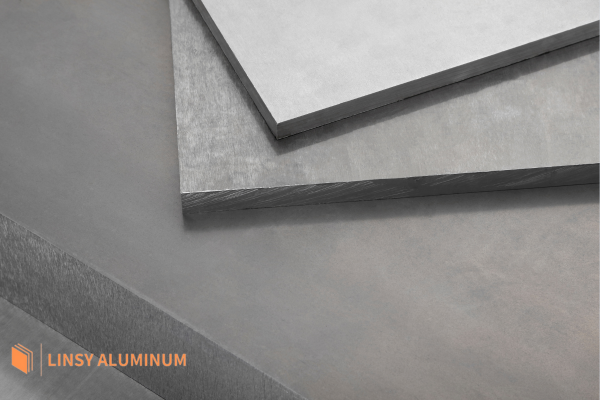
In the vast landscape of aluminum alloys, the 2017 variant holds a significant place. But what exactly sets it apart? Let’s break it down.
This particular alloy is celebrated for its unique blend of strength, lightweight properties, and impressive machinability. These characteristics are carefully balanced to deliver optimal performance in a variety of demanding applications.
What is 2017 aluminum?
2017 aluminum, often referred to as duralumin, is a type of aluminum alloy known for its impressive strength and hardness. The key to its robust nature lies in its composition. This aluminum alloy is meticulously crafted by introducing copper as the primary alloying element, typically ranging from 3.5% to 4.5%.
This strategic addition of copper significantly enhances the material’s strength compared to pure aluminum. In fact, the inclusion of copper can elevate the alloy’s strength to a level surprisingly comparable to that of some steel grades.
This unique blend of aluminum and copper creates an alloy that’s both strong and lightweight, making it an ideal choice for various structural and mechanical applications where a combination of durability and weight savings is crucial.
Overview of common applications.
2017 aluminum alloy finds widespread use in various applications. Due to its high strength and fatigue resistance, it is commonly employed in the aerospace industry for aircraft components. Additionally, it is popular in structural components like window frames, where its excellent machinability and corrosion resistance are valuable. The alloy’s versatility extends to everyday items such as coat hangers, showcasing its usability in diverse products.
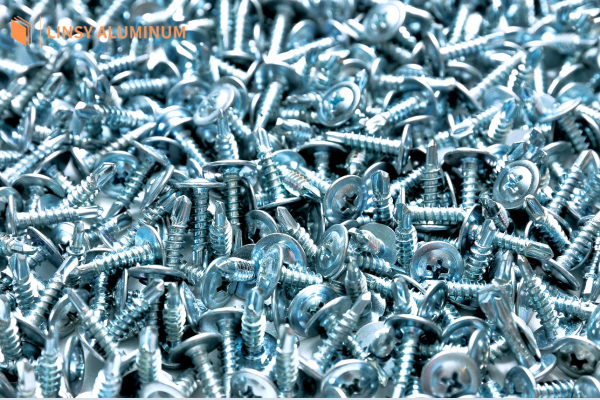
Chemical Composition of 2017 Aluminum
The remarkable properties of 2017 aluminum alloy can be directly attributed to its meticulously balanced chemical composition. This alloy is primarily composed of aluminum, with copper as its major alloying element, significantly influencing its strength and hardness.
Let’s take a closer look at the typical composition:
|
Element |
Content (%) |
|---|---|
|
Aluminum (Al) |
91.5 – 95.5 |
|
Copper (Cu) |
3.5 – 4.5 |
|
Magnesium (Mg) |
0.4 – 0.8 |
|
Silicon (Si) |
0.2 – 0.8 |
|
Iron (Fe) |
0.7 max |
|
Zinc (Zn) |
0.25 max |
|
Manganese (Mn) |
0.4 – 1 |
|
Titanium (Ti) |
0.15 max |
|
Chromium (Cr) |
0.1 max |
|
Others (each) |
0.05 max |
|
Others (total) |
0.15 max |
Properties of 2017 Aluminum Alloy
The key properties of 2017 Aluminum Alloy explain why it’s great for making precise parts. It’s light (2.79 g/cm³), and not much heavier than other aluminum, so it’s easy to handle. It melts 513–640°C to take some heat, but it isn’t the best for super-hot jobs. It’s okay at moving heat (134–150 W/m·K), which helps machining parts like fittings.
For electricity (34–39% IACS), it’s not a star—don’t use it for wires. It takes some energy to warm up (0.88 J/g·K), and it expands slightly when hot (23.6 µm/m·K), something to watch for in tight designs. Best of all, it’s strong (~370–420 MPa), perfect for tough stuff like screws or machine bits. Basically, 2017 is a strong, light choice for precision work—not for wiring or extreme heat!
|
Property |
Value |
Notes |
|---|---|---|
|
Density |
2.79 g/cm³ |
Slightly heavier than pure aluminum. |
|
Melting Point |
~513–640°C (955–1,184°F) |
Range varies with alloy composition. |
|
Thermal Conductivity |
134–150 W/m·K (T4 temper) |
Decent heat transfer. |
|
Electrical Conductivity |
34–39% IACS (T4 temper) |
Moderate, typical for 2000-series. |
|
Specific Heat Capacity |
0.88 J/g·K |
Energy to heat it. |
|
Coefficient of Thermal Expansion |
23.6 µm/m·K (20–100°C) |
Expands moderately with heat. |
|
Tensile Strength |
~370–420 MPa (T4) |
High strength depends on temper. |
2017 Aluminum vs. Other Aluminum Alloys
While 2017 aluminum undeniably holds a strong position within its category, it’s essential to consider how it compares to other aluminum alloys in terms of specific properties and suitability for various applications.
Differences in strength, weldability, and corrosion resistance become apparent when compared with alternatives like 2024, 6061, and 7075 aluminum. Understanding these nuances is crucial for engineers and manufacturers when selecting the optimal material for their needs.
2017 vs. 2024 Aluminum Alloy
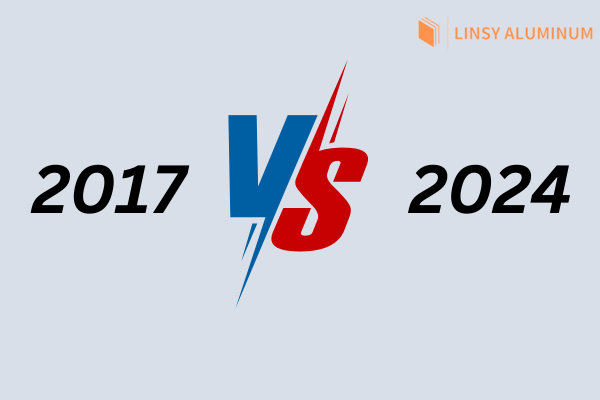
|
Property/Feature |
2017 Aluminum Alloy |
2024 Aluminum Alloy |
|---|---|---|
|
Main Composition |
Al + 4% Cu + 0.6% Mn |
Al + 4.4% Cu + 1.5% Mg |
|
Strength |
High (e.g., 420 MPa in T4) |
Very High (e.g., 470 MPa in T3) |
|
Corrosion Resistance |
Moderate (needs protection) |
Poor (needs cladding/coating) |
|
Machinability |
Excellent |
Good |
|
Weldability |
Poor (prone to cracking) |
Poor (prone to cracking) |
|
Typical Use |
Screws, machine parts |
Aircraft skins, structural parts |
2017 and 2024 Aluminum are both 2000-series alloys with copper, making them strong but tricky to weld. 2017, with a bit of manganese, is a machining champ—great for things like screws or fittings where you need precise cuts. 2024, with magnesium, is even stronger and a go-to for aircraft parts like wings, but it’s weaker against rust unless coated. Neither likes welding, and both need protection from corrosion. Pick 2017 for machined components; go with 2024 for top strength in aerospace.
2017 vs. 6061 Aluminum Alloy

|
Property/Feature |
2017 Aluminum Alloy |
6061 Aluminum Alloy |
|---|---|---|
|
Main Composition |
Al + 4% Cu + 0.6% Mn |
Al + 1% Mg + 0.6% Si |
|
Strength |
High (e.g., 420 MPa in T4) |
Moderate (e.g., 310 MPa in T6) |
|
Corrosion Resistance |
Moderate (needs protection) |
Very Good (naturally resistant) |
|
Machinability |
Excellent |
Good |
|
Weldability |
Poor (prone to cracking) |
Excellent (versatile) |
|
Typical Use |
Screws, machined fittings |
Frames, pipes, general structures |
2017 and 6061 Aluminum are opposites in some ways. 2017, a copper-heavy 2000-series alloy, is strong and awesome for machining stuff like screws or fittings, but it rusts easily and hates welding. 6061, from the 6000-series, isn’t as strong but fights rust better and welds like a pro—think bike frames or pipes. 2017’s your pick for high-strength machined parts; 6061’s the choice for versatile, corrosion-resistant builds.
2017 vs. 7075 Aluminum Alloy

|
Property/Feature |
2017 Aluminum Alloy |
7075 Aluminum Alloy |
|---|---|---|
|
Main Composition |
Al + 4% Cu + 0.6% Mn |
Al + 5.6% Zn + 2.5% Mg |
|
Strength |
High (e.g., 420 MPa in T4) |
Extremely High (e.g., 570 MPa in T6) |
|
Corrosion Resistance |
Moderate (needs protection) |
Moderate (better than 2024) |
|
Machinability |
Excellent |
Good |
|
Weldability |
Poor (prone to cracking) |
Poor (not recommended) |
|
Typical Use |
Machine parts, fasteners |
Military gear, aircraft frames |
2017, with copper and manganese, is perfect for bolts or small parts. 7075 Aluminum, loaded with zinc, is one of the toughest aluminum alloys out there, and it is used in military and aircraft frames where strength is king. Both rust if unprotected and don’t weld well, but 7075’s corrosion resistance is better. Choose 2017 for machining jobs; pick 7075 when you need max power.
Common Tempers of 2017 Aluminum
Understanding the different tempers of 2017 aluminum is crucial, as they indicate the alloy’s specific mechanical and physical properties after undergoing heat treatments or processing. These tempers are denoted by a four-digit designation system, providing valuable insight into the material’s characteristics.
Among various tempers, the T4 temper is commonly observed in 2017 aluminum. This specific temper signifies that the alloy has undergone a heat treatment process to enhance its strength and is naturally aged to achieve stable properties. Choosing the right temper is crucial as it significantly impacts the alloy’s performance in different applications.
Characteristics of 2017-T4
|
Characteristic |
Detail |
What It Means |
|---|---|---|
|
Strength |
~370–420 MPa |
Tough for its weight. |
|
Density |
2.79 g/cm³ |
Light but solid. |
|
Corrosion Resistance |
Okay (needs a coating) |
Rusts without protection. |
|
Machinability |
Really good |
Easy to cut and shape. |
|
Weldability |
Not great |
Hard to join with welding. |
|
Hardness |
~105–120 HB (Brinell) |
Pretty hard, resists scratches. |
|
Ductility |
Good |
Can bend without breaking easily. |
The characteristics of the 2017 T4 Aluminum Alloy tell you what it’s good at. It’s strong (370–420 MPa), so it can handle tough jobs like making screws or machine parts without being too heavy. At 2.79 g/cm³, it’s light enough to keep things easy to move. It’s only okay against rust, so you must coat it if it’s often outside.
How easy it is to machine shine—you can cut and shape it like a pro, which is perfect for detailed work. But welding? Not so much—it doesn’t like being fused together that way. It’s hard (105–120 HB), meaning it won’t scratch up easily and is bendy enough (good ductility) to shape without snapping. In short, the 2017 T4 is your buddy for strong, light, machined stuff—just don’t weld it or leave it uncoated in the rain!
Conclusion
In conclusion, understanding the intricacies of 2017 aluminum alloy can significantly impact your material selection for various applications. From its unique composition to its mechanical properties, this guide has shed light on the versatility and advantages of 2017 aluminum. Knowing the specifics can enhance your decision-making process if you’re considering its use in marine environments or comparing it to other alloys. For further inquiries or to explore sourcing options in the United States, feel free to get in touch with reputable suppliers. Making informed choices about materials is key to achieving optimal project performance and efficiency.
Why Choose Linsy Aluminum
As one of the leading aluminum brands and a top supplier in China, Linsy Aluminum emphasizes quality and reliability in all its products. Our advanced aluminum factory in China manufactures high-performance aluminum alloys that satisfy the toughest industry requirements. Dedicated to excellence, we provide precision, durability, and tailored options to accommodate your specific project needs, establishing us as a trusted partner for businesses globally searching for exceptional aluminum solutions. GET A QUOTE
Frequently Asked Questions
What makes 2017 Aluminum Alloy unique from other alloys?
This aluminum alloy stands out due to its specific composition, primarily the copper content, which gives it an excellent balance of mechanical properties. This blend makes it suitable for applications demanding good strength, lightweight properties, and moderate corrosion resistance.
Can 2017 Aluminum Alloy be used in marine environments?
While it possesses decent corrosion resistance, using this alloy in marine environments typically necessitates protective coatings or surface treatments. The high salinity and humidity in such settings can accelerate corrosion if the alloy is left unprotected.
How does the aging process affect 2017 Aluminum Alloy’s properties?
As the alloy ages, particularly after heat treatment, its mechanical properties, such as strength and hardness, tend to increase naturally over time. This process is known as age hardening and is a defining characteristic of certain aluminum alloys, impacting their temper and application suitability.
What are the common challenges in machining 2017 Aluminum Alloy?
Although 2017 aluminum is generally considered machinable, one challenge lies in its tendency to produce gummy chips during cutting operations. This issue can clog tooling and affect the surface finish. Using appropriate lubricants and optimized cutting parameters is crucial for efficient machining.
Where can I find suppliers for 2017 Aluminum alloys in the United States?
To find suppliers for this particular aluminum alloy in the United States, you can search online metal distributors using specific ASTM specifications, such as ASTM B211. Industry associations and directories can also provide valuable leads to reputable suppliers.






